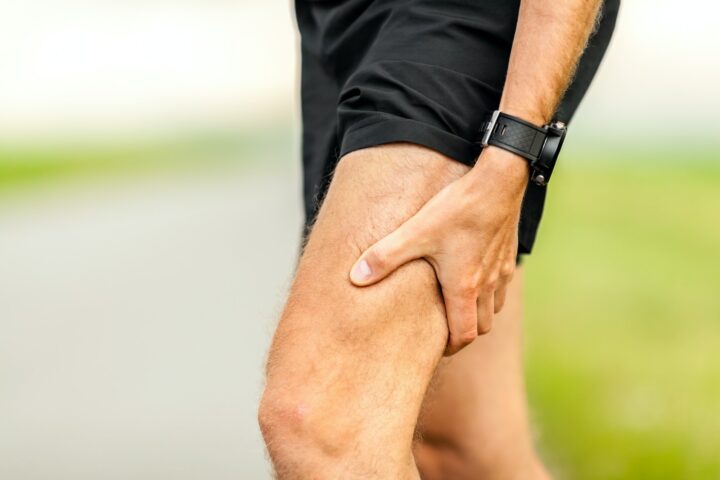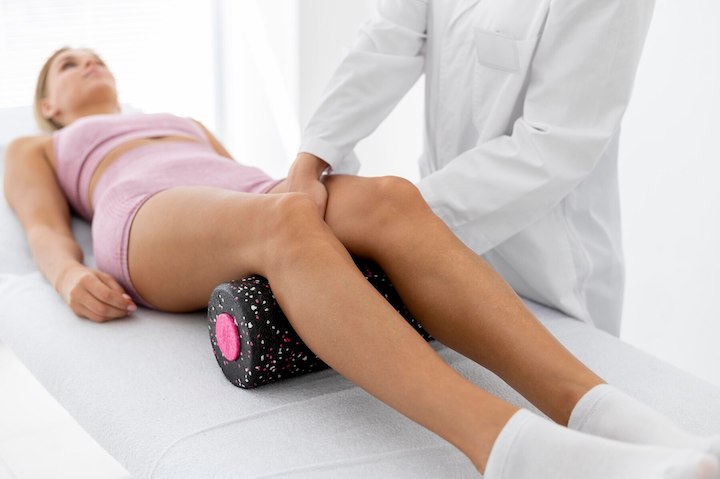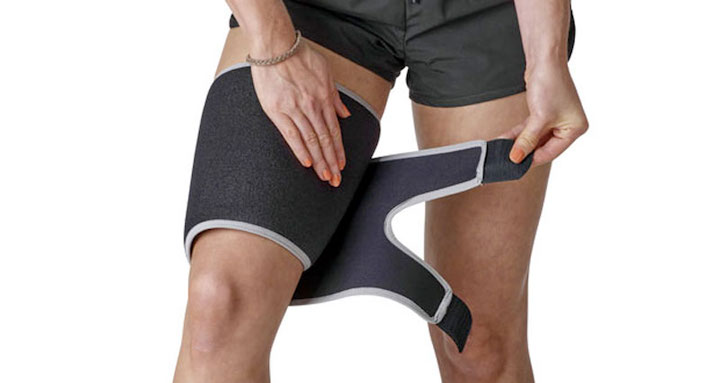A hamstring strain, also known as a pulled hamstring or hamstring injury, is a common sports injury when the muscles at the back of the thigh are stretched or torn. The severity of the injury can range from mild to severe, with symptoms including pain, tenderness, swelling, stiffness, weakness, and cramping.
Proper management and recovery of hamstring pain are crucial to prevent further damage and ensure a safe return to physical activity.
Some common causes and risk factors for hamstring strains are:

Photo Credit: Blas, Envato Elements
Hamstring strains are classified according to their severity level, which helps determine the proper course of treatment and expected recovery time. The classification is based on the amount of muscle fibre tearing present in the injury.
The grading system for a hamstring strain is divided into three categories, which are:
| Grade | Description |
| Grade 1 | A mild strain involving stretching or micro-tearing of the muscle fibres, resulting in minor discomfort and possibly some swelling. The muscle is still able to function normally. |
| Grade 2 | A moderate strain involving partial tearing of the muscle fibres, resulting in significant pain, swelling, and difficulty with movement. The muscle is weakened, and there may be a noticeable limp. |
| Grade 3 | A severe strain involving the complete tearing of the muscle fibres, resulting in severe pain, swelling, and loss of function. The muscle is unable to function properly, and significant weakness is present. |
Understanding the severity level of a hamstring strain is crucial in determining the appropriate treatment plan and estimated recovery time. A mild strain may only require rest and ice, while a severe strain may require surgery and a longer recovery period.
It is important to note that the severity of a hamstring strain may not be immediately apparent, and a proper diagnosis is crucial in determining the severity level.
A hamstring strain can cause a range of symptoms, depending on the severity of the injury. Common symptoms include:
Individuals with a hamstring strain may also find it difficult to participate in activities that involve bending the knee or extending the leg. If you experience any of these symptoms, it is important to seek medical attention promptly.

Photo Credit: Freepik
To diagnose a hamstring strain, a healthcare provider will conduct a physical examination, review your medical history, and perform any necessary imaging tests, such as an MRI. These tests can help confirm the diagnosis and determine the extent of the injury.
If you suspect you have a hamstring strain, it is essential to seek a prompt diagnosis to ensure the appropriate management and treatment plan.
Hamstring strain treatment involves a combination of management approaches, depending on the severity of the injury. Mild strains usually respond well to conservative treatment, while severe strains may require more intensive medical intervention.
The RICE method is one of the most common and effective treatments for hamstring strain. RICE stands for rest, ice, compression, and elevation. Resting the affected leg and limiting physical activity can prevent further damage and support healing. Applying ice to the injured area can help reduce swelling and inflammation. Compression through the use of an elastic bandage can also help reduce swelling. Elevating the affected leg above the heart can help reduce swelling and promote healing.
Over-the-counter pain relief medications such as acetaminophen, ibuprofen, or aspirin can help reduce pain and inflammation. If the pain is severe, prescription pain medications may be recommended.
Rehabilitation exercises are crucial for restoring strength and flexibility to the injured hamstring. A physical therapist can create an individualised exercise program to meet the patient’s specific needs. Exercises may include gentle stretching, strengthening exercises, and range-of-motion exercises.
Applying heat or cold to the affected area can help alleviate pain and reduce inflammation. Heat therapy, such as using a heating pad or warm towel, can help increase blood flow and promote healing. Cold therapy, such as using an ice pack or cold towel, can help reduce swelling and inflammation.
Using supportive devices such as braces or crutches can help reduce pain and provide support during the healing process. Proper use of these devices can help prevent reinjury and speed up recovery.

Photo Credit: Sports Injury Clinic
Hamstring strain recovery time varies depending on the injury’s severity and the treatment’s effectiveness. Mild to moderate strains usually heal within a few weeks with proper care, while severe strains may take several months. Following a structured recovery plan and adhering to proper care and treatment are essential for optimal healing.
Grade 1 mild strains take 2-4 weeks to heal. Grade 2 moderate strains take 4-8 weeks. Grade 3 complete muscle tears can take 3+ months to recover fully.
Three signs of a hamstring strain are sudden pain in the back of the thigh during activity, muscle tenderness and weakness, and reduced range of motion due to pain and tightness.
The fastest hamstring strain treatments are immediate RICE (rest, ice, compression, elevation), anti-inflammatory medication, bracing, massage after a few days, and gentle stretches once the pain subsides.
Treating a hamstring strain involves resting to avoid re-injury, icing to reduce inflammation, over-the-counter pain medication, compression bandage, elevation, and physical therapy exercises and modalities after some initial healing.
Preventive measures can be taken to reduce the risk of a hamstring strain. These include warming up before physical activity, maintaining proper form and technique during exercises, gradually increasing the intensity and duration of activities, and incorporating stretching and strengthening exercises specifically targeting the hamstring muscles.
The prognosis for recovery from hamstring strain varies depending on the severity of the injury and the individual’s adherence to treatment and recovery plans. Mild strains can typically be treated and healed within a few weeks, while more severe strains may require a longer recovery. Proper rest, rehabilitation, and following a structured recovery plan are essential for optimal healing.
Yes, hamstring strain can recur, especially if proper preventive measures are not taken or if the individual returns to physical activity too soon after the initial injury. Engaging in proper stretching and strengthening exercises and gradually returning to physical activity can reduce the risk of recurrence.
Complications that may arise from hamstring strain include chronic pain, muscle weakness and stiffness, and decreased range of motion. In some cases, a torn hamstring muscle may require surgery. Proper diagnosis, treatment, and rehabilitation can help prevent complications and ensure optimal healing.
Hamstring strain and pull are often used interchangeably and refer to the same injury. Both terms describe a stretching or tearing of the muscles at the back of the thigh.